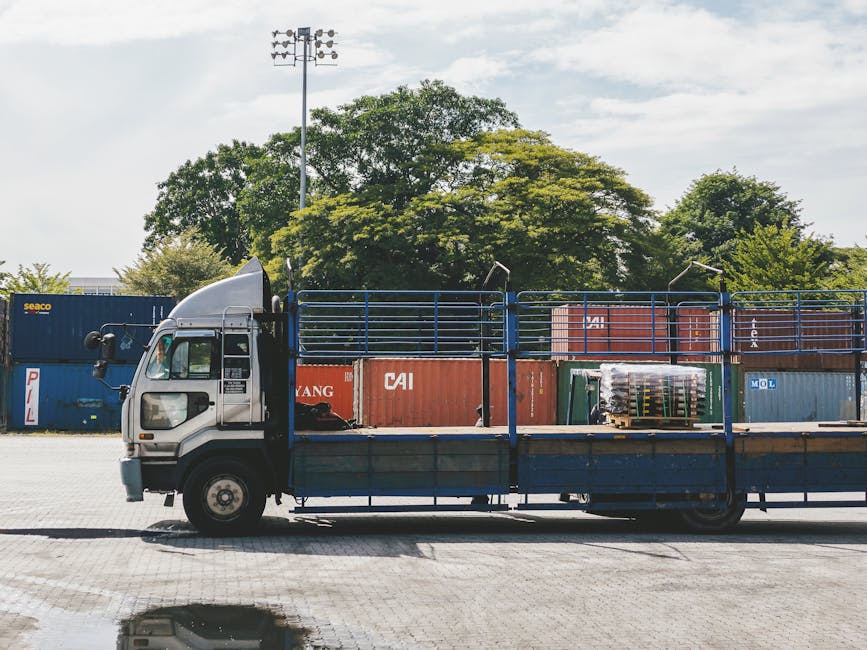Tips for Driving in Heavy Traffic
Driving in heavy traffic can be a stressful and challenging experience for many motorists. Whether you’re a seasoned driver or a novice behind the wheel, navigating congested roads requires patience, skill, and a good understanding of traffic dynamics. In this comprehensive guide, we’ll explore a range of tips and strategies to help you safely and effectively drive in heavy traffic situations. From mastering defensive driving techniques to staying calm under pressure, we’ll cover everything you need to know to tackle traffic jams like a pro.
Understanding Traffic Dynamics

Before we dive into specific tips for driving in heavy traffic, it’s essential to understand the underlying dynamics of congestion. Traffic congestion occurs when the volume of vehicles on a road exceeds its capacity, leading to slower speeds, increased travel times, and frustration among drivers. Factors such as accidents, road construction, rush hour, and special events can contribute to heavy traffic conditions.
One key concept to grasp is the idea of traffic waves, which are caused by the ripple effect of braking. When one driver brakes suddenly, it creates a chain reaction as vehicles behind them also slow down. This cascading effect can result in a stop-and-go pattern that exacerbates congestion. By maintaining a safe following distance and avoiding abrupt braking, you can help mitigate traffic waves and keep the flow of vehicles moving smoothly.
Plan Ahead and Stay Informed

One of the best ways to avoid getting stuck in heavy traffic is to plan your route in advance and stay informed about current road conditions. Use GPS navigation apps like Google Maps or Waze to check for traffic updates, accidents, and construction zones along your intended route. These apps can provide real-time traffic data and suggest alternative paths to help you avoid congestion.
It’s also helpful to plan your travel times strategically. Rush hour traffic typically peaks in the early morning and late afternoon, so try to schedule your trips outside of these busy periods whenever possible. If you have the flexibility to adjust your work hours or run errands during off-peak times, you can significantly reduce your exposure to heavy traffic.
Maintain a Safe Following Distance

One of the most critical tips for driving in heavy traffic is to maintain a safe following distance between your vehicle and the car in front of you. The general rule of thumb is to leave at least a 3-second gap between cars, but in heavy traffic conditions, it’s wise to increase this distance to 4-5 seconds to allow for unexpected stops or slowdowns.
By keeping a safe following distance, you’ll have more time to react to sudden changes in traffic flow and reduce the risk of rear-end collisions. Avoid tailgating other drivers, as this can create a dangerous situation and lead to accidents. Remember, it’s better to arrive at your destination a few minutes late than to risk your safety by driving too closely to the vehicle ahead.
Practice Defensive Driving Techniques

Defensive driving is a proactive approach to road safety that focuses on anticipating potential hazards and taking steps to avoid accidents. In heavy traffic, defensive driving techniques are especially important to protect yourself and others on the road. Some key strategies to practice include:
1. Stay alert and minimize distractions: Keep your eyes on the road, hands on the wheel, and avoid using your phone or other distractions while driving. Pay attention to the behavior of other drivers and be prepared to react quickly to changing conditions.
2. Use your mirrors and signal effectively: Check your mirrors regularly to be aware of vehicles around you and signal your intentions early when changing lanes or merging. Clear communication can help prevent misunderstandings and reduce the risk of collisions.
3. Be patient and courteous: In heavy traffic, it’s easy to feel frustrated and agitated, but practicing patience and courtesy can help maintain a calm and safe driving environment. Allow other drivers to merge, use turn signals, and follow traffic laws to promote a harmonious flow of traffic.
Stay Calm and Manage Stress
Driving in heavy traffic can be a nerve-wracking experience, but it’s essential to stay calm and manage stress to avoid making rash decisions or engaging in aggressive behavior. If you feel overwhelmed or anxious behind the wheel, try the following techniques to help you relax:
1. Take deep breaths: Inhale deeply through your nose and exhale slowly through your mouth to calm your nerves and reduce tension. Deep breathing can help regulate your heart rate and promote a sense of relaxation.
2. Listen to calming music: Create a playlist of soothing music or podcasts to listen to while driving in heavy traffic. Music can have a calming effect on your mood and distract you from stressful situations on the road.
3. Practice mindfulness: Stay present in the moment and focus on your surroundings instead of letting your mind wander to stressful thoughts. Mindfulness techniques can help you stay centered and make better decisions while driving.
Prepare Your Vehicle for Heavy Traffic
Ensuring that your vehicle is in good working condition is essential for safe driving in heavy traffic. Before you hit the road, perform a quick vehicle inspection to check for any issues that could affect your driving experience. Some key maintenance tasks to consider include:
1. Check your tires: Make sure your tires are properly inflated and have sufficient tread depth to maintain traction on wet or slippery roads. Underinflated or worn tires can increase the risk of skidding or hydroplaning in heavy traffic conditions.
2. Test your brakes: Have your brakes inspected regularly to ensure they are functioning correctly and can stop your vehicle safely in emergency situations. Spongy brakes or unusual noises when braking could indicate a problem that needs attention.
3. Monitor your fluid levels: Check the levels of essential fluids such as oil, coolant, and windshield washer fluid to keep your vehicle running smoothly. Low fluid levels can lead to mechanical issues that may jeopardize your safety on the road.
Adapt to Changing Conditions
Flexibility is key when driving in heavy traffic, as conditions can change rapidly and require you to adjust your driving style accordingly. Be prepared to adapt to the following scenarios:
1. Lane closures: If you encounter a lane closure or obstruction ahead, merge early and follow the instructions of traffic control devices or personnel. Avoid making sudden lane changes or cutting off other drivers, as this can lead to accidents or congestion.
2. Construction zones: Reduce your speed and exercise caution when driving through construction zones, as workers and equipment may be present. Follow posted speed limits and be prepared for sudden stops or detours in these areas.
3. Inclement weather: Heavy traffic combined with adverse weather conditions like rain, snow, or fog can pose additional challenges for drivers. Slow down, increase your following distance, and use your headlights to improve visibility in poor weather.
Expert Opinions
We reached out to several driving experts for their insights on navigating heavy traffic. John Smith, a certified driving instructor, emphasized the importance of patience and situational awareness when driving in congested areas. “Drivers should anticipate the actions of others and be prepared to react quickly to changing conditions,” he advised.
Lisa Johnson, a traffic engineer, highlighted the role of technology in managing traffic flow. “Smart traffic management systems can help monitor and control congestion in real time, improving the efficiency of road networks and reducing delays for drivers,” she explained.
Common Misconceptions
One common misconception about driving in heavy traffic is that aggressive behavior and lane weaving can help you get ahead faster. In reality, such maneuvers can disrupt the flow of traffic, endanger other drivers, and increase the risk of accidents. It’s essential to practice patience and courtesy on the road to promote safety for all motorists.
Conclusion
Driving in heavy traffic can be a challenging experience, but with the right skills and strategies, you can navigate congested roads safely and efficiently. By understanding traffic dynamics, planning ahead, practicing defensive driving techniques, and staying calm under pressure, you can become a more confident and competent driver in heavy traffic situations. Remember to maintain a safe following distance, adapt to changing conditions, and prioritize safety at all times. With these tips in mind, you’ll be better equipped to handle the challenges of heavy traffic and arrive at your destination with peace of mind.
Next time you find yourself stuck in a traffic jam, take a deep breath, put on some calming music, and remember these tips for driving in heavy traffic. Stay alert, stay patient, and stay safe on the road.


